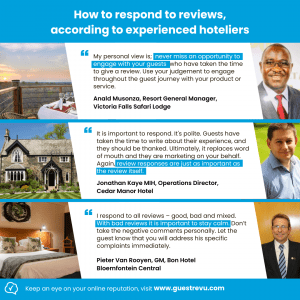 Guest expectations were put through the ringer this past summer. Heading into the first real summer since the pandemic struck, every hotelier knew that travel would be back with a vengeance, and yet none of us could have predicted many of the other factors beyond our control that would result in such drastic labor shortages.
Guest expectations were put through the ringer this past summer. Heading into the first real summer since the pandemic struck, every hotelier knew that travel would be back with a vengeance, and yet none of us could have predicted many of the other factors beyond our control that would result in such drastic labor shortages.
To maintain service levels, we’ve turned to tech so that we can get the most out of those associates and managers who remain. But the two of us argue is that the innovative pivots hotel brands have taken thus far is only the beginning. More and more automation is required to ensure that properties have the bandwidth to explore new services and amenities that will evolve for the product. And foremost amongst this continuous process is the digitalization of repetitive tasks so that team members can focus on being more attentive to guests’ needs.
Where we see this digitalization making a big impact in 2023 is in the domain of pre-stay communications and managing expectations. For instance, it’s one thing to promise a fast, stable internet connection then frustrate guests when they arrive and the router is down. It’s a whole other to broadcast to guests at the right time and through the right medium that, “Hey, just a forewarning that the WiFi is a bit spotty right now, but we understand how important this is and our IT manager is on the case as we speak.”
Expectation management is critical for setting the pace for a great stay and ultimately guest satisfaction as well as word of mouth and loyalty. Those expectations are established before the guest arrives, and yet the present labor situation makes it difficult to handle all outbound updates on top of all the incoming guest requests. The only way forward is a platform that can automate the distribution.
To this end, we interviewed Michael Kessler, CEO of ReviewPro, a Shiji Group brand, to explore some specific features in the company’s Messaging Automation platform that help to smooth omnichannel outbound communications and smooth over the scenarios like the one above.
“People can empathize with the current labor challenges in hospitality, but only to a point,” stated Kessler. “They still want to maximize their own enjoyment while rediscovering the world following two years of lockdown-related stress. Whatever back-of-house issues you have, the guest only sees the front-of-house production, and they will expect the services that are listed on the website or branded app to be readily available.”
Crucially for you to remember, these labor issues aren’t going away. It’s not a matter of riding it out; such global forces like mass reskilling into other sectors during the pandemic, an aging workforce, new labor competition from caregiving centers or other service industries, inflation incentivizing workers to seek ever-higher wages and a general apathy for the industry amongst young hires are all converging to limit every hotel’s prospects for new supply. Again, automation must be a perennial objective.
Aside from a WiFi snafu, numerous other services and operations may need to be amended or throttled to contend with labor challenges. Just think about:
- Cleaning schedules, rush rooms or turndown service
- Room service or runner tasks like extra towels
- Restaurant, gift shop, spa or golf hours of operation
- Valet, bellhop, concierge and front desk agent availability
- Maintenance issues, inspections or safety tests
In demoing ReviewPro’s Messaging Automation with Kessler, there are a few prominent features that every hotelier should be aware of when evaluating their workflows for efficient prearrival communications with guests.
1. Omnichannel messaging cascades
Some customers want to hear from hotels by email; others want quicker, shorter messages through SMS or third-party instant messaging services like WhatsApp (platform of choice for Europeans) and WeChat (platform of choice for Chinese citizens). This is beyond any hotelier’s control and yet it benefits us to be as flexible as possible in order to have our messaging properly received and acted upon by guests. With enhanced delivery logistics, you can set a cascade of preferred outbound channels that’s different for each outbound messaging campaign. For instance, your first choice for the three-days-out message may be email, but if this channel fails to deliver (like for an OTA email alias), the message will then automatically attempt to send a text to the guest’s phone. And if that secondary option also fails, the system tries via WhatsApp.
2. Profile-specific views
With a one-way push of guest profile data from the PMS, outbound messaging can be designed to target narrow workflows so that personalization is enhanced even before the customer is onsite. At its most foundational level, the pre-stay welcome communications should be split for first-timers and returning guests. Ditto for leisure guests and clients of corporate accounts. Now think about how you can engineer the pre-stay comms for direct bookings versus OTA guests: for the latter a goal could be to focus the messaging on phone-based channels and loyalty conversions, for example.
3. Dynamic inserts
So, you have a delivery cascade and have set up different outbound campaigns according to some broad characters of your guests. The next enhancement would be for your messages to dynamically appear in the customer’s language of choice based off of their email or phone account settings. As well, the messaging should not just be blanket text but address the customer by their name and arrival date. With the flip of a switch, templated links for surveys, upselling (via a partnership with Oaky) and express check-in or check-out (via a partnership with MyCheck) can all be inserted.
4. Delivery statistics
Such reporting works much like the digital advertising funnel we are all familiar with. You have the messy raw data uploaded to your outbound comms platform. From there, the service can tell you which emails or phone numbers are actually valid. Then, of those validated guest accounts, you get a percentage actually delivered. And for all this winnowing out, you can map it over weeklong or monthlong stretches to report on KPI improvements for delivery and guest interactions in order to guide the evolution of your pre-stay messaging.
5. One-off text alerts
The beauty of modern messaging platforms that can connect a desktop application right to the guest’s phone is that you can easily set up one-time SMS campaigns intended for information that’s important in the moment. For example, say the elevator breaks down. Rather than have an already busy front desk agent warn every guest passing through the lobby, a quick ping can be sent out to reassure everyone in house that it will be fixed within a few hours.
Above all, the goal of these five features is to help establish a threshold for your service capabilities in as labor-free a manner as possible so that guests are fully up to speed on what’s happening on-property and are never disappointed.
From the macro-forces listed above, it’s all about the labor which is in short supply for the foreseeable future. The beauty of feature-rich platforms like ReviewPro’s Messaging Automation is that they let you set up a great defense then go on the offense via post-stay feedback support and upselling integrations. For the 2023 budget planning season ahead, we hope that consider these five features when evaluating solutions to help automate your pre-stay communications.
This article may not be reproduced without the expressed permission of the author.

















